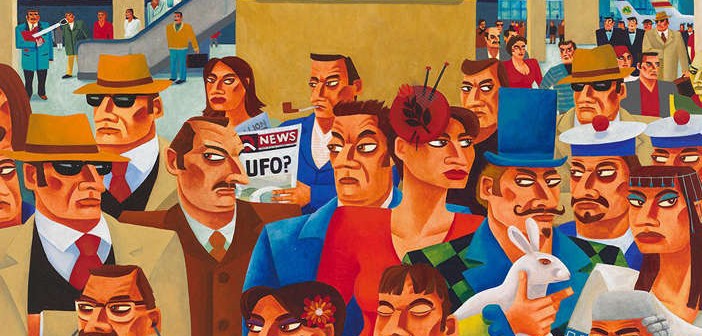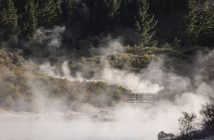Las Vegas is oddly beautiful in the morning. I’m in a suite at the Palazzo facing east, and not west onto the Strip. This disappointed me on arrival but after a deep sleep, the early sun starts to reach its long, golden fingers through the gap in the curtains and all the way up to the room-sized bed, suffusing the room with a glow that seems to creep out from under the furniture, leaking up the walls and across the ceiling. Windows in Vegas hotels don’t open and there are scant balconies (‘to stop the jumpers’, I’m later told), so I can’t step outside; instead I can take coffee in front of the hermetically sealed vista in front of me and watch the sun come up through the mist and stillness, reflecting off the Palazzo and onto the sleek, bronze curves of the Wynn hotel, with the incongruous verdant golf course sitting behind it, and the Winchester, Whitney Ranch and aptly named Sunrise Manor neighbourhoods stretching out across the valley in front of the Muddy Mountains to the east. The sun finally climbs out of the Valley of Fire State Park and crests the hills, signing in for another hard shift in the desert.
Then it starts. You can’t hear anything except the air conditioning, but you can see the traffic begin to increase; not on foot, you understand – the mile-long strip and the labyrinth of walkways between hotels are the only areas it’s acceptable to walk – but the cars beneath start to be pulled in like iron filings sliding toward a magnet. There’s a bit of tumult in the corridors. Descending in the elevators, the promo videos for tonight’s shows get louder and more insistent. When the doors open, that indistinct hubbub of beeps and chatter signifies the casino floor cranking into life. It’s been open all night, of course, and the dejected faces of the night’s big losers have already drifted past in the lift, ghostlike; but the fresh morning gamblers are gravitating towards the tables, hoping for a cheeky win on the way to breakfast. By the time you get outside, it’s up and running – a mile-long vortex of glitter, fibre glass, cocktails and debt, churning and rotating inexorably in the sand, pitilessly parting middle America with its money and leaving it with just a suntan and a souvenir cup.
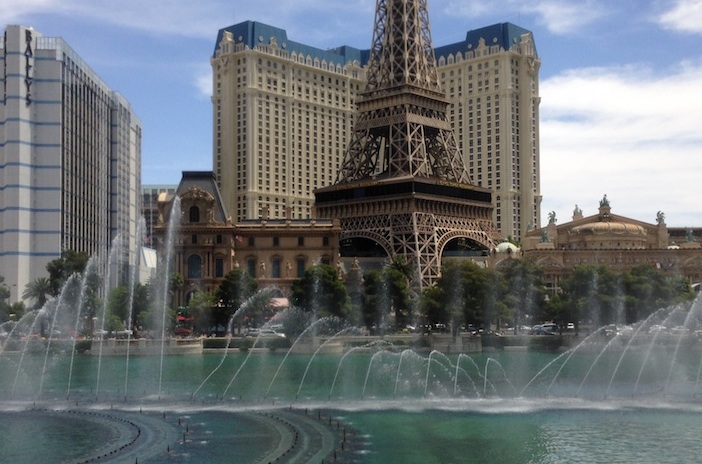
At least, that’s the cynic’s view. And it’s a view that’s well-grounded: this is, after all, a place where in the 50s and 60s you could climb atop your Vegas hotel, grab a drink and watch atomic bombs being detonated at the Nevada Test Site, 65 miles north of the city. Sunglasses optional. The Hangover, Leaving Las Vegas, Casino: you can pick your cinematic reference point, mine being the outlandish ending of Con Air where Nic Cage’s Cameron Poe finds that drenched fluffy bunny. But there’s more. There must be more. Two million people live here and 40 million visited last year, and a man cannot live by bunnies and baccarat alone. I’m here to find out what else there is, for visitors who happen to be culturally inclined. It turns out to be more than I’d thought.
I start off with something simple: performing in a piece of video art. The Cosmopolitan is surely the most artistically minded of all the Strip hotels, displaying an ever-changing array of visual stimuli from the interactive pillars in its lobby, and with authentic and very valuable pieces bravely scattered in and amongst the merry revellers who populate its corridors. They also have an artist in residence programme, and when I visit, LA-based artist Pearl Hsiung is co-opting willing guests as props and participants in her video project, Original Face. Before I know it I’m in front of the camera doing meaningful things with my hands; the final film will be displayed online and throughout the Cosmopolitan’s ubiquitous screens. A gentle initiation, and it’s refreshing to see a hotel committing itself to bring artists from around the world right into its in-house studio – there are roughly a dozen artists in residence annually. Outside on the 65-foot digital ‘marquee’ screen that overlooks the Strip and the hotel pool, Tracey Emin’s ‘I Promise to Love You’ scribbles its neon message at regular intervals. Art on the Strip, hiding in plain sight.
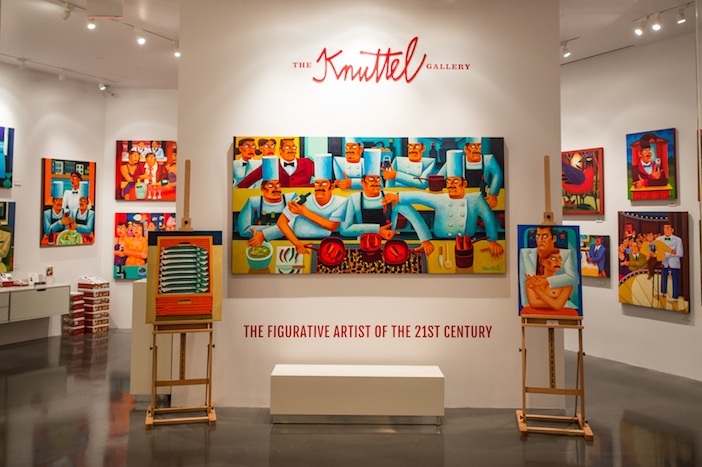
Of course, there are more traditionally presented exhibitions, sitting in numerous galleries around the place. In the Grand Canal Shoppes at the Venetian (hands-down the second best Venice in the world, by the way), Irish figurative artist Graham Knuttel has his own gallery, and the bright and whimsical faces he paints sit well amid the gaudy hedonism of Las Vegas. Over at the Bellagio, beyond its frankly baffling Alice in Wonderland flower garden (including a living flower painting and 500 live butterflies), the Bellagio Gallery of Fine Art shows truncated selections of exhibitions from leading museums around the world. When I pass through, ‘Painting Women’ adorns the walls, featuring works on loan from the Museum of Fine Arts in Boston, including pieces by Georgia O’Keefe, Mary Cassatt and Berthe Morisot.
Away from the Strip, Las Vegas is making a concerted effort to build on its existing artistic heritage, in the form of the downtown 18b Arts District. On a walking tour of the area (18b, as the area was formerly 18 blocks) I’m struck by the contrast with the Strip – this is a place of low-rise strip malls, of bail bondsmen and thrift stores arranged in front of graffiti-strewn alleys, littered with car carcasses and the smell of petrol. If the Strip is Disneyland then this is the real America and its authenticity stands completely apart from the wafer-thin façade uptown. First Friday, which takes place, obviously, on the First Friday of each month, is the city’s monthly cultural festival, with exhibitions, musical performances, street food and all types of entertainment taking place in the streets and galleries of the Arts District. On the Thursday prior to First Friday (‘Preview Thursday’), the galleries open their doors to more serious buyers who want to beat the crowds, giving local artists a great opportunity to gain exposure. The vanguard of LV’s effort’s to establish a downtown cultural hub will be the proposed Modern Contemporary Art Museum, still fundraising, which will offer 60,000 square feet, a quarter of which will be devoted to education. This rather striking structure should break ground in 2015 and open in 2018.
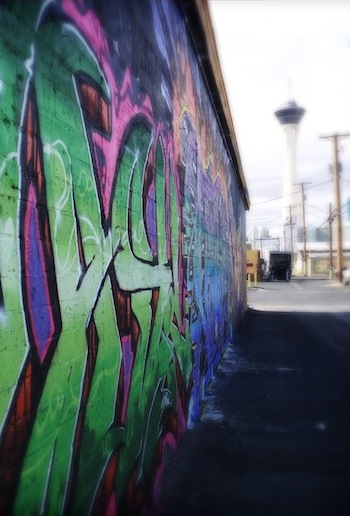 There’s definitely promise in all this urban regeneration. Vegas even has a Boxpark now, a la Shoreditch, although the shipping containers seem a lot fancier and more modified than their East London counterparts. The developments reach deep into the community too: aforementioned artist Graham Knuttel is working on a 60-foot mural downtown with nine high school children. At the moment it’s all a long way from the climbing rents, Starbucks and eventual gentrification that come along with so many cultural revivals, but it’s a real breath of fresh air next to the multicolour mayhem surrounding the Strip.
There’s definitely promise in all this urban regeneration. Vegas even has a Boxpark now, a la Shoreditch, although the shipping containers seem a lot fancier and more modified than their East London counterparts. The developments reach deep into the community too: aforementioned artist Graham Knuttel is working on a 60-foot mural downtown with nine high school children. At the moment it’s all a long way from the climbing rents, Starbucks and eventual gentrification that come along with so many cultural revivals, but it’s a real breath of fresh air next to the multicolour mayhem surrounding the Strip.
But head back up there we must, to take in the newest fixture on the Vegas skyline – the High Roller. I’ll happily admit that when I first heard I was having a ‘High Roller Experience’, I imagined being festooned with huge, filthy piles of greenbacks, showered with preposterous opulent cocktails and ushered into some smoky chamber, with shadowy rich folk clustered around a pristine gaming table. In fact, the High Roller is the world’s tallest observation wheel, bigger than the Singapore Flyer and, yes, 57 feet taller than the measly London Eye. At 550 feet tall, this is not a view for the faint of heart, but it is glorious. In the sunlight, you can see the distant mountains, the grimy neglected roofs and the obscene enormity of the megahotels (the MGM Grand has an incomprehensible 6,852 rooms). By night the pulsing luminescence of the LEDs that retired all the Vegas neon is something to behold.
Speaking of retired neon, one of the non-negotiable must-visit sights in Sin City is the Neon Museum. The charming antiquated signs are beautiful enough, but in tandem with, without doubt, the finest tour guide I have ever encountered (ask for Ian, an all-American combination of single-minded customer service, boundless enthusiasm and profound knowledge), the rusting hulks littering place represent a unique entry point into the history of Las Vegas. The Moulin Rouge hotel sign lies, glittering mournfully, in the display: it once adorned the first desegregated hotel casino in the United States. The property was founded by a group of investors that included the Brown Bomber himself, heavyweight champ Joe Louis. Until it opened, African-American performers at the more established hotels had to stay off-site at designated race-appropriate boarding houses. The Moulin Rouge opened in May 1955, heralded on the cover of the June edition of Life magazine. By December of the same year, it had closed its doors and filed for bankruptcy – run out of business by fellow casino owners who weren’t ready to lose their business to an integrated crowd. This story, and many others, is tethered historically to the town’s once-great signage, wasting away gracefully in the Nevada sand.
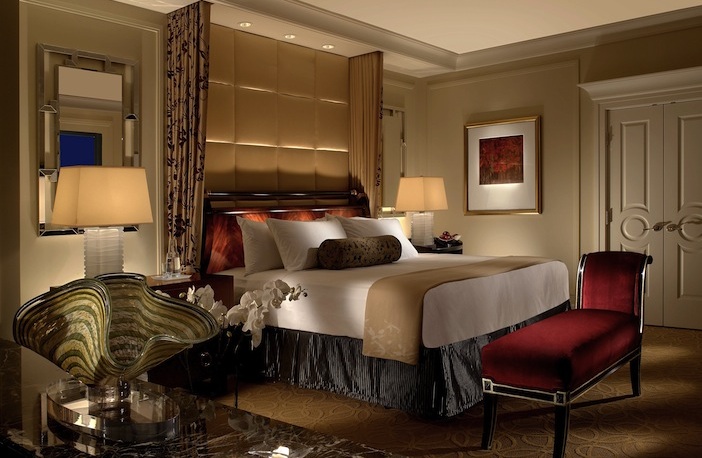
Vegas as a cultural destination, then? Perhaps. Aside from the grittier downtown 18b arts scene, there’s the $470m Smith Center for the Performing Arts, hosting the Las Vegas Philharmonic and the Nevada Ballet Theatre. There are also the myriad shows that accompany each of the richest resorts – Cirque de Soleil alone have seven in town – although these cater to the more transient cultural consumer, showcasing astounding athleticism but not much that might engage the brain. There is some new Shakespeare in town at the Smith Center in the shape of The Tempest, with Teller (of magicians Penn and Teller) adapting and directing, alongside Aaron Posner, with the peerless Tom and Mrs Waits, Kathleen Brennan, providing the songs. Throw the pop-up delights of 18b, First Friday and the Boxpark into the mix and you have some genuine cultural gravity.
In the context of Vegas, such attempts at genuine pretentiousness are always going to play second fiddle to the booze-fuelled large living that gives this place its character. Wear skinny jeans here and some bro or other will probably push you in the pool and throw his mojito in your face. But if you do come here, you’ll need something to do with your hangovers, before you steel yourself to lose some more money. Head downtown to 18b, away from the raging cataclysmic whirlpool sucking down dollars at the Strip, and you might find more than you bargained for. Soon enough there’ll even be cycle paths to go with the street art and street food. It’s not quite an arts destination in its own right, but the 40 million people that come through each year now definitely have another option. Vegas, and culture: not the easiest of bedfellows, but it can, indeed, be done.
Suites at The Palazzo start from $199. View hotel info and availability.
British Airways flies direct to Las Vegas daily from Heathrow and three times a week from Gatwick. Flights start at £665, including all taxes, fees and charges.
For further information about Las Vegas, please visit www.visitlasvegas.co.uk.

